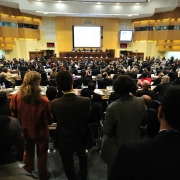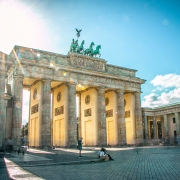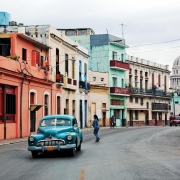What are the five regional groups of the United Nations General Assembly?
Topic of Study [For H1/H2 History Students]:
Paper 1: Safeguarding International Peace and Security
Section B: Essay Writing
Theme III Chapter 2: Political Effectiveness of the UN in maintaining international peace and security
Historical context
When the United Nations General Assembly (UNGA) was tasked to choose members to fill the non-permanent seats on the Security Council (UNSC), it then led to the creation of five groups:
- African states
- Asia-Pacific states
- Latin American and Caribbean states
- Eastern European states
- Western European and Other states
These groups were formed based on geography. Initially, these regional groups were affected by changing political conditions, such as the decolonisation of the Third World nations from 1954 to 1960. For instance, British colonies that gained independence had joined groups based on their geographical proximities rather than being in the Commonwealth.
The only explicit provisions of the Charter on geographical distribution concern the election of the 10 non-permanent members of the Security Council (Article 23, para. 1) and the recruitment of the staff of the Organization (Article 101, para. 3).
[…]
The members of certain regional groups also use the groups for discussion and consultation on policy issues. Moreover, since groupings of Member States by geographical region have evolved as an informal arrangement for a number of practical purposes, different groupings are sometimes used for different purposes, or in the context of different United Nations bodies.
An excerpt from the United Nations Juridical Yearbook 1996 (Letter to the Senior Legal Adviser of the Universal Postal Union).
Apart from the consideration of these five regional groups, it is important to look at the formation of other groupings that affected the voting behavior of member nations in the UNGA.
Non-Aligned Movement (NAM)
The NAM was formed during the Cold War by the Yugoslav President Josip Broz Tito. It was established for countries that sought to stay neutral, refusing to align either with the United States or the Soviet Union. During the Bandung Conference in April 1955, the concepts for the NAM were created.
There were four key aims in the Conference:
- To promote goodwill and cooperation among the nations of Asia and Africa, to explore and advance their mutual as well as common interests, and to establish and further friendliness and neighbourly relations;
- To consider consider social, economic and cultural problems and relations of the countries represented;
- To consider problems of special interest to Asian and African peoples;
- To view the position of Africa and Asia and their peoples in the world of today and the contribution they can make to the promotion of world peace and cooperation.
In 1961, the NAM was founded in Belgrade (during the Non-Aligned Conference) under the leadership of Marshall Tito, Jawaharlal Nehru and Gamal Abdel Nasser. 25 Arab, Asian and African countries attended the Summit that marked its founding. Members in the NAM had objected to foreign intervention in the Middle East (such as the Suez Canal Crisis), labelling Western interference as ‘acts of imperialism’.
The African Group at the UN was created in 1958 and soon made its presence felt on decolonisation and anti-apartheid issues, eventually ostracising South Africa at the UN and maintaining pressure for the liberation of Rhodesia-Zimbabwe and Namibia. NAM states led the expansion of the UN Security Council and the Economic and Social Council by the mid-1970s. During this period, the Convention on the Elimination of Racial Discrimination was agreed; a committee on decolonisation was established; and the special committee against apartheid was created.
[…]
Due to the pressure of a determined Southern majority, the People’s Republic of China took its permanent seat on the UN Security Council in 1971 in the teeth of US opposition. Western disenchantment with the global South’s dominance of multilateral diplomacy eventually led to the creation of the Group of Seven industrialised advanced nations in 1975.
An excerpt from “Bandung Revisited: The Legacy of the 1955 Asian-African Conference for International Order” by Amitav Acharya and See Seng Tan.
What can we learn from this article?
Consider the following question:
– Assess the importance of regional groups in influencing the effectiveness of the United Nations General Assembly.
Join our JC History Tuition to study the role of the United Nations and its principal organs. The H2 and H1 History Tuition feature online discussion and writing practices to enhance your knowledge application skills. Get useful study notes and clarify your doubts on the subject with the tutor. You can also follow our Telegram Channel to get useful updates.
We have other JC tuition classes, such as JC Math Tuition and JC Chemistry Tuition. For Secondary Tuition, we provide Secondary English Tuition, Secondary Math tuition, Secondary Chemistry Tuition, Social Studies Tuition, Geography, History Tuition and Secondary Economics Tuition. For Primary Tuition, we have Primary English, Math and Science Tuition. Call 9658 5789 to find out more.




